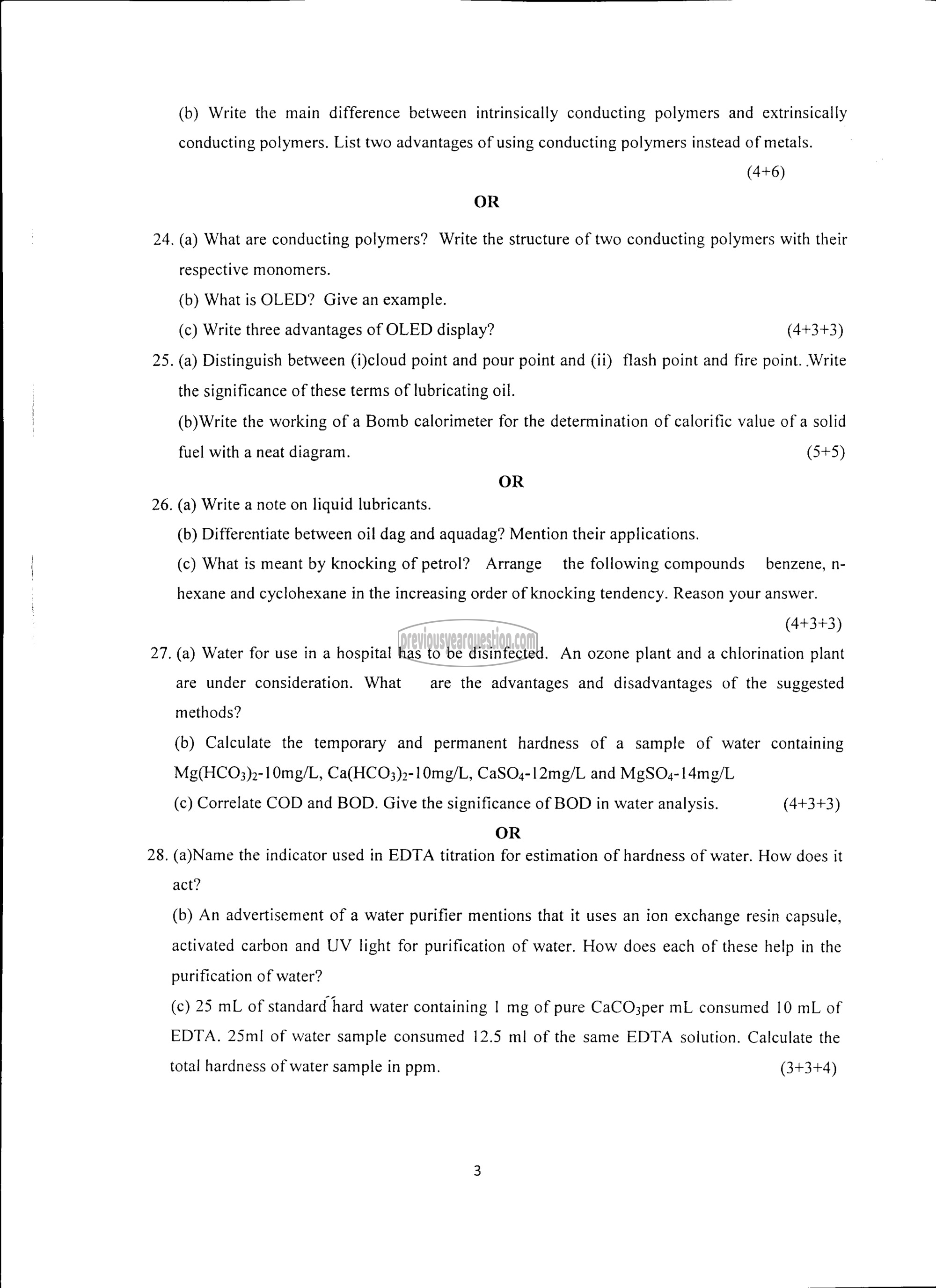APJ ABDUL KALAM TECHNOLOGICAL UNIVERSITY Previous Years Question Paper & Answer
Semester : S1 and S2
Subject : ENGINEERING CHEMISTRY
Year : 2016
Term : AUGUST
Branch : MECHANICAL ENGINEERING
Scheme : 2015 Full Time
Course Code : CY 100
Page:3
| Write the main difference between intrinsically conducting polymers and extrinsically
conducting polymers. List two advantages of using conducting polymers instead of metals.
டு
OR
24, (a) What are conducting polymers? Write the structure of two conducting polymers with their
respective monomers.
(b) What is OLED? Give an example.
(c) Write three advantages of OLED display? (4+3+3)
25. (a) Distinguish between (i)cloud point and pour point and (ii) flash point and fire point. Write
the significance of these terms of lubricating oil.
(b) Write the working of a Bomb calorimeter for the determination of calorific value of a solid
fuel with a neat diagram. (5+5)
OR
26. (a) Write a note on liquid lubricants.
(b) Differentiate between oil dag and aquadag? Mention their applications.
(€) What is meant by knocking of petrol? Arrange 16 following compounds _ benzene, n-
hexane and cyclohexane in the increasing order of knocking tendency. Reason your answer.
(4+3+3)
27. (a) Water for use in a hospital has to be disinfected. An ozone plant and a chlorination plant
are under consideration. What are the advantages and disadvantages of the suggested
methods?
(b) Calculate the temporary and permanent hardness of a sample of water containing
Mg(HCOQ3)2-1 0mg/L, Ca(HCO3)2-10mg/L, CaSO4-12mg/L and MgSO.-14mg/L
(c) Correlate COD and BOD. Give the significance of BOD in water analysis. (4+3+3)
OR
28. (a)Name the indicator used in EDTA titration for estimation of hardness of water. How does it
act?
(b) An advertisement of a water purifier mentions that it uses an ion exchange resin capsule,
activated carbon and UV light for purification of water. How does each of these help in the
purification of water?
(c) 25 mL of standard hard water containing | mg of pure CaCO3per mL consumed 10 mL of
EDTA. 2501 of water sample consumed 12.5 ml of the same EDTA solution. Calculate the
total hardness of water sample in ppm. (3+3+4)
